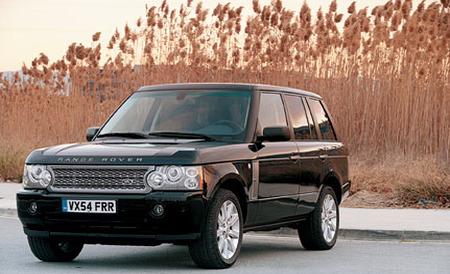The modern Range Rover is the product of a dysfunctional family. It was conceived by BMW, but then the Germans divorced Britain’s Rover. So it was presented to the world by Ford, which bought Land Rover (separate from Rover Cars) from BMW in 2000. Got that?
Ford was happy to inherit the German idea of the perfect car for an English gentleman but not so pleased by the ongoing commitment to purchase most of its expensive parts-the engines, for one-from BMW. It was clear that eventually Ford would put its engines into the Range Rover, but the complexities of car development and manufacturing meant the swap could not be done quickly. It would have to wait until the model’s midlife face lift. And here it is: the 2006 Land Rover Range Rover.
Because Land Rover and Jaguar sit together in Ford’s Premier Automotive Group, and both are based in England, the logical choice from Ford’s selection of suitable power units was the Jaguar AJV8. Land Rover versions of that engine are already available in the Land Rover LR3 and will be featured in the upcoming Range Rover Sport (it shares its underpinnings with the LR3 rather than the Range Rover).
So the 2006 Range Rover has a 4.4-liter Jaguar engine developing 302 horsepower, 20 more than the 4.4-liter BMW V-8 it replaces. And there’s a new top model with a 4.2-liter supercharged V-8 adapted from the engine in the Jaguar S-type R and XJR, which puts out 390 horsepower and makes this the fastest-ever production Range Rover. Gasoline models both get ZF’s 6HP26 six-speed automatic transmission; a five-speed was standard previously.
For the Range Rover, the engine needed a new oil pan, now integrated with the front-differential housing. The four-wheel-drive system, which previously used a Torsen mechanical center differential, now has a clutch system directed electronically. And-no small issue, this-BMW and Ford electronic-control systems had to be made to talk to each other.
When it was launched in 2002, the Range Rover was reestablished as the king of the SUVs, a beautifully executed amalgam of old-money luxury sedan and Land Rover’s rugged, go-anywhere capability, which came at a suitably regal price. Not surprisingly, the supercharged newcomer is even more expensive, at about $90,000. That’s a hefty $15,000 more than the naturally aspirated model, although not so much more than the similarly equipped ’05 Westminster edition.
The much cheaper LR3 has been acclaimed as a better drive than the company’s flagship. Consequently, there have been a number of changes to improve the Range Rover’s on-road handling.
Thanks to its close association with Jaguar, Land Rover now has a separate team headed by Jaguar’s vehicle integration specialist, Mike Cross, to fine-tune its vehicles on the road. Cross has even had the supercharged Range Rover pounding around the Nürburgring in Germany. The result is that this fastest of Range Rovers tackles sweeping bends on the highway at more than 100 mph with complete confidence and without disturbing the passengers and still rides acceptably well on tight, twisty byways. The steering has better on-center feel than it did in previous models, and changes to the air springs and anti-roll bars make it 15 percent stiffer in roll.
The supercharged model has Brembo four-piston fixed-caliper front brakes and comes only on 20-inch wheels with Continental CrossContact UHPs (that stands for “ultra-high performance,” by the way). We can confirm that they work just fine on pavement (up to the governor-limited 130 mph) and off, clambering up seemingly impossible slippery cliff faces and negotiating swampy tracks.
The surprise is that in these tough conditions the supercharged engine isn’t temperamental. The mapping for the electronic throttle is changed to make it easier to trickle along in low range.
Externally, the supercharged model makes that satisfying American-sounding exhaust wuffle at idle, but inside it is quieter than its predecessor, thanks to work on engine isolation and extra insulation, including laminated glass for the front side windows.
All 2006 Range Rovers have a deeper front bumper and new headlight units. The supercharged model is distinguished by Bentley-like mesh on the grille and side vents. But this isn’t really a face lift; it’s an organ transplant-and the operation has been successful.


Leave a Reply